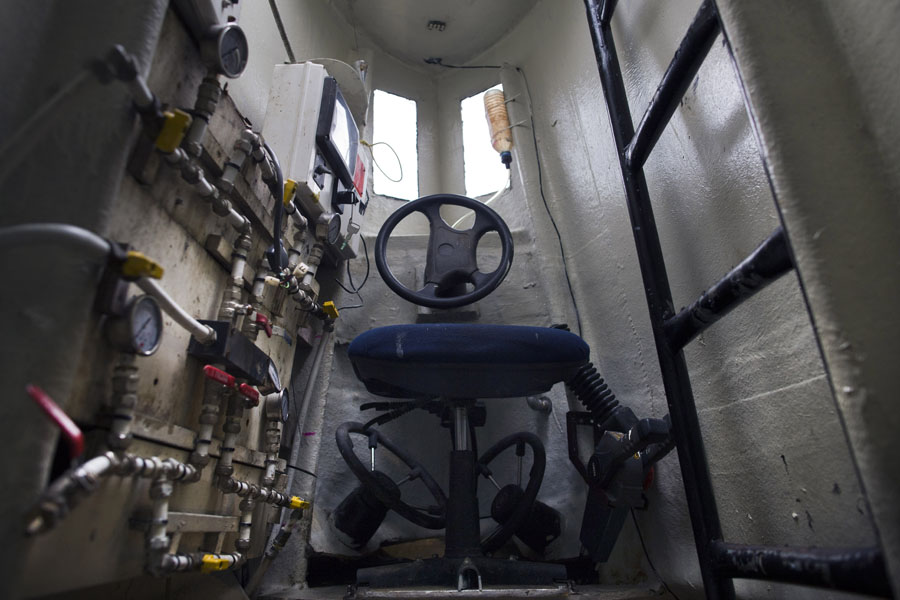Genre: Thriller
Premise: After being kicked out of the Navy, a cocaine addict is forced to pilot a narco sub to the U.S. carrying one ton of cocaine.
About: This is the third sale from Dominic Morgan and Matt Harvey, who are starting to make a name for themselves in the action/thriller genre. Their scripts The Bridge and The Controller are both being made into films (by Simon West and James McTeigue respectively). Hyperbaric has landed Tomorrow Never Dies helmer, Roger Spottiswoode.
Writers: Dominic Morgan and Matt Harvey
Details: 94 pages
You may not have seen many submarine movies lately. But that’s about to change. Studios are all developing their individual sub flicks for their once-every-five-years foray into the genre (or should I say SUB-genre – heh heh).
So why, with submarine films not being nearly as popular as they used to be, are studios still betting on them? Because they’re cheap! You only have to build one set. Also, unlike a lot of “single location” films, submarines aren’t stationary, which opens up many more story possibilities than, say, a group of people stuck in a bomb shelter.
And as long as we’re talking about submarine movies, I’m going to give you a free submarine idea to write yourself, since I’m never going to write it. You ready?
So a couple of years ago, the U.S. located two nuclear-armed Chinese subs hanging out a few miles off the East Coast. All you need to do is create a modern day “Cuban Missile Crisis” out of the situation. The U.S. spots some Chinese subs hiding off its shore. They send one of their subs to take them down. They hit one, but the other escapes. Tempers flare between the nations and in the meantime, you now have an angry rogue Chinese sub with nuclear capabilities off our coast.
Boom, count the billions. Just give me an associate producer credit.
Conall McGinty is an addict of the highest order. The guy will drink cooling fluid to get a buzz, and I’m not even sure that has alcohol in it. Conall’s biggest weakness though, is coke, and that’s what’s gotten him into his latest predicament.
Conall owes a gang of Mexicans thousands of dollars after snorting more cocaine than he sold. They were set to kill him until they found out he used to pilot subs in the Navy. This makes him a hot commodity on the homemade sub circuit – you know, those crazy motherfuckers who build their own subs to smuggle drugs into the U.S.
So a crazy beast of a man named Gamboa buys McGinty from the Mexcians in hopes that he can pilot 1 TON of cocaine (yes, you read that right, TON) to America. The two are joined by the sub’s creator, an OCD mad scientist type named Ethan Bellhaus.
When Ethan explains to Conall that his sub is made out of fiberglass, Conall nearly falls down laughing. That’ll barely get them 30 feet below sea level, a good 30 feet higher than they need to be to pull this off. Conall says that if they try to go any lower than that, the sub will collapse in on itself, but Ethan insists the sub can take it.
As they head to their destination, they’re bombarded with a series of obstacles: They’re chased by the coast guard, a 19 year old pregnant stowaway has snuck onto the ship, and at one point, the sub takes on so much water that it begins sinking. It’ll take every bit of skill Conall has to pull this off, which isn’t much, since we find out that Conall never even made it out of sub school.
I can’t stress this enough. If you want to sell a spec screenplay, this is the perfect way to go about it. Start with a marketable genre (Thriller), a marketable premise (submarine on the run), keep the action sparse and easy to read (Most action paragraphs here are 1-2 lines), have a low character count so it’s easy for the reader to remember who’s who without having to take notes (this is so important), and finally, make the concept cheap. Like I said at the outset, this is essentially a one location movie.
The nice thing about checking these boxes is that readers will be a lot less judgmental when reading your screenplay. One of the first things a reader asks himself after reading the premise is, “Would my boss want to turn this into a movie?” If the answer is “Yes,” they’re going to read your script with a favorable eye. When they see a lame choice, they’ll say, “That’s an easy fix.”
However, if your premise is boring or, worse, bad, readers are practically hunting for problems. The sooner they can discard your script, the sooner they can start skimming. Checking those boxes is kind of like having a magic shield over your script.
So I’m not surprised that Hyperbaric sold even though it’s far from perfect. For starters, the setup is flawed. You have this man who built this submarine, and yet they need someone else to pilot it? If you can build a submarine, don’t you have a fairly good idea of how to pilot it yourself?
I was willing to let this go but then there’s this entire day where Conall is chained up in the engine room while the sub floats along. If that doesn’t prove how little he’s needed, I don’t know what does.
The script also lacked urgency. There wasn’t a ticking time bomb on WHEN they needed to get to the U.S. by. Let me give you a script-related example of why that’s a big deal. One of the scenes in Hyperbaric had the engines dying. So Conall and Ethan had to go back to the engine room and fix them.
The scene plays like drying paint because there’s no reason for them to finish quickly. They can finish in 2 hours. They can finish in 2 days. It didn’t affect their mission either way. You can’t have that in a movie, especially in a thriller. You have to feel tension in every single scene. I recently heard a saying, “Your characters shouldn’t be able to sit down in the second act,” and it’s so true. If characters can “sit down” or hang out without anywhere they have to be, there’s a good chance there’s something wrong with the underlying structure of your screenplay.
But it wasn’t all bad. Morgan and Harvey did some interesting things with Conall, making him a coke-addict stuck on a tiny submarine with 1 ton of cocaine he can’t touch. That was a crafty choice.
And the script had some exciting sequences as well, such as the coast guard battle. I’m going to give you another tip here that ALWAYS WORKS in a movie. It doesn’t have a name so I’ll just call it the SET NUMBER TRICK.
What you do is you set a number that the heroes absolutely positively cannot go beyond. And then later in the script, you write a scene where they have no choice but to GO BEYOND that number. So here, Conall makes it clear that if this sub goes down to 50 feet below water, they’ll be crushed. However, when the coast guard starts dropping water grenades on them, their only chance for survival is to dive to 100 FEET! Since all of us know that that’s TWICE AS DEEP as this vessel is capable of diving, we feel an intense amount of fear for our characters when they perform the dive.
Hyperbaric is a perfectly conceived spec screenplay. I just wish its execution was a little more consistent. For those of you just starting out wanting to see how a saleable spec reads, though, you’ll want to find this one for sure.
[ ] what the hell did I just read?
[ ] wasn’t for me
[x] worth the read
[ ] impressive
[ ] genius
What I learned: Conveying distance is something a lot of writers ignore, which can kill the tension during an important moment. Say, for example, that you have one character spying an another character in a bookstore. If you don’t tell us how close the spyer is, we’re forced to guess, and we might guess wrong. Whereas you imagined your character to be just several feet away, we might think they’re all the way on the other side of the room, creating a much less exciting scene. So make sure to always convey this information. In Hyperbaric, there’s a scene where our sub is approached by the Coast Guard. And for a moment, I didn’t know if the Coast Guard was 30 feet away or 1 mile away. But then the writers say that our characters can “see the faces” of the Coast Guard. That immediately oriented me to how close (and therefore how dangerous) the Coast Guard boat was.



